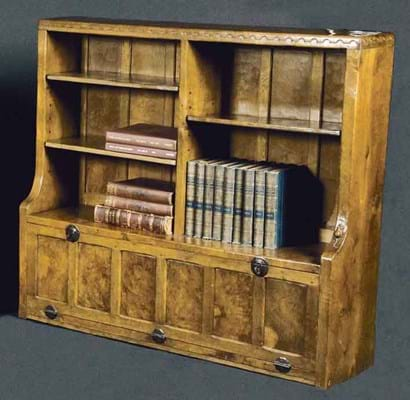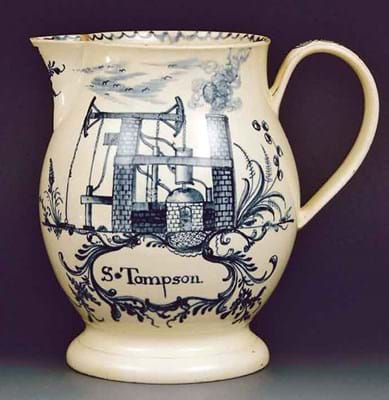The craftsman of choice was, of course, the now famously collectable Robert 'Mouseman' Thompson of Kilburn. The factory he established, and many workshops set up by followers, continue to produce the distinctive adzed oak furniture, but it is this pre-War signature material which makes the biggest prices.
Mr Wood's daughter has been gradually selling the Gate House pieces through Bamfords' Derby rooms and the December 12-13 sale saw the final consignment which included a fine pair of bookcases.
Made for Mr Wood's study, they were small and easily housed at 3ft 11in high x 4ft 3in wide (1.14 x 1.29m). They also had everything the collector looks for - rectangular adzed tops with carved arcades on the frieze, adjustable shelves set over a slightly projecting base and a fall front formed of six pollarded oak panels fitted with wrought-iron hinges and catches.
The carved mouse to the uprights proclaimed their maker, while colour and condition were superb.
The £2000-3000 estimate reflected little more than the vendor's desire to sell, but, even so, bidding went well above more realistic expectations with more than 20 bidders in action.
The trade backed off around the £7000 mark and finally the battle came down to one between two major collectors in Derbyshire and a Yorkshireman. The Mouseman's fellow tyke won the day with a bid of £18,000.
Creamware jug
Historically, the most interesting ceramic was an unidentified creamware ovoid jug, c.1775, 8in (20cm) high, transfer-printed in blue with Thomas Newcomen's steam engine, above a foliate cartouche inscribed S. Tompson, with an Oriental scene verso.
It was an incredibly rare piece which Bamford's James Lewis first saw at a routine valuation four years ago and had finally landed for sale Thomas Newcomen (1663-1729) has a special place in Derbyshire's industrial heritage.
He developed his so-called 'fire-engine' in the late 17th century, improving it gradually over the following decades. It used steam power to create a vacuum which allowed large-scale water extraction, initially in flooded tin mines in his native Cornwall. The technology was adapted to Derbyshire coal and iron ore mining and was even used c.1730 to pump steam into the Derby Silk Mill to counteract the brittleness of the long silk filaments.
The jug was quite badly damaged, with a big Y-shaped crack from the rim to the base, but its rarity and historical significance drew interest from all over the UK, including local museums. A £600-1000 estimate looked pretty reasonable, but was easily outstripped when a dealer from Yorkshire had to go to £3400 to win it.
The buyer's premium was 15 per cent.








